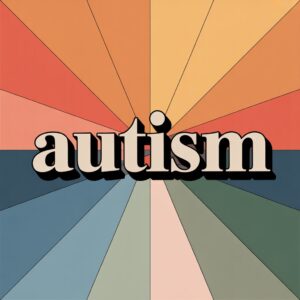10 Autism Myths: Debunking Common Misconceptions
In our previous post, we discussed how tricky it is to define autism. Part of this complexity lies in how it manifests in different people. There is a saying: “If you meet one person with autism, you only know one person with autism.”
If you are new to learning about autism, you might encounter some common misconceptions about it. However, these misconceptions do not accurately represent what autism truly is.
This is why we wanted to continue our learning journey with 10 myths about autism:
- All autistic people are the same. We want to emphasise the importance of “all” here. Not all autistic individuals possess exceptional skills, learning disabilities, or exhibit violent behaviours. Each autistic brain is unique, with different combinations of strengths and challenges that manifest in varied ways.
- Autistic people aren’t empathetic or don’t have emotions. Autistic people do experience emotions. But they communicate them differently compared to neurotypical people.
- Only boys are autistic. More boys go through an Autism Spectrum Disorder diagnosis than girls. This is because the criteria to diagnose ASD mostly focus on the way autistic boys behave. Also, girls can be better at hiding their characteristics (called “masking”) from teachers, parents, or peers. This makes it harder to diagnose girls, which in some cases occurs later in life.
- Autism presents only in children. Autism is a lifelong condition that is sometimes identified during childhood. The earlier it is recognised, the better future a child will have, as they can receive support that will benefit them throughout their life.
- Autism is caused by a parenting style. Parenting is not classified as a cause of autism. Yet, parents with enough information can be the best advocates for their children.
- Autism can be cured. Autism is not a disease; it is a condition. We focus on supporting environments, therapy in some cases, and assisting with comorbid conditions.
- Only children can be diagnosed. Adults can also seek a diagnosis. In any case, an ASD diagnosis is something that can be very helpful to an adult, no matter where they are in life.
- Autistic Children can’t learn. Autistic children have different thinking and learning styles. Learning environments for autistic children will include short and clear instructions, together with visual tools and time/places for rest. This is not a hard rule, as the learning environment should be tailored to the preferences of each person.
- Autism is caused by a single factor. Researchers still haven’t identified the causes of autism. There is currently no consensus on its cause(s). However, studies indicate a strong genetic component, along with environmental factors.
- Stimming is bad. Some examples of stimming can be flapping hands, rocking, repetitive sounds, or fidgeting. These repetitive behaviours are strategies that autistic people use to concentrate, calm or manage overwhelm. ****
References
- https://www.autismawareness.com.au/navigating-autism/myths-and-misconceptions-about-autism
- https://www.autistica.org.uk/what-is-autism/autism-myths-and-causes
- https://www.autism.org.au/what-is-autism/common-misconceptions/
- https://health.clevelandclinic.org/autism-myths-and-misconceptions
- https://www.webmd.com/brain/autism/features/autism-myths-facts




